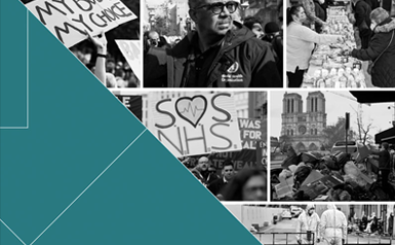Last night was filled with incredible results in Scotland. A terrible night for the SNP, historic wins for the Conservatives and better-than-expected results for Scottish Labour and the Scottish Liberal Democrats painted a very different picture north of the border than in 2015. In stark contrast to England, the Conservatives performed extraordinarily well, increasing their number of seats in Scotland by a historic 12.
It would’ve been inconceivable just two years ago that it would be Scottish voters who provide the Conservatives with some solace on a particularly difficult night. As a result, the election has reframed the conversation in Scotland around independence from what seemed like a steady march towards a second independence referendum, to a swing against the SNP to unionism.
SNP
Total seats: 35 (minus 21)
The SNP suffered substantial losses (and a fall of 13% in vote share) in an election in which voters rejected, again, the rhetoric of Scottish independence. The SNP lost 21 seats, meaning they are still the largest party in Scotland, but experienced some notable and symbolic losses – Alex Salmond and Angus Robertson the two most devastating – creating a significant dent in the 56 seat win they enjoyed just two years ago.
Salmond’s loss is a symbolic blow to the independence movement, and Nicola Sturgeon has already conceded that she may be forced to “reflect” on the pursuit of a second independence referendum.
Today Nicola Sturgeon gave a statement following the results in which she said she needed to “pause and consider” the result, and refused to say whether she was willing to take a second independence referendum off the table. For a party whose popularity has been tied to their pro-independence stance, it’s a huge political task to separate themselves from their raison d’ être – and inevitably begs the question, if they don’t stand for independence, what do they stand for?
Scottish Conservatives
Total seats: 13 (plus 12)
The Scottish Conservatives returned 13 MPs in their best result in Scotland since 1983. Surpassing expectations, they took several seats from the SNP – including Banff and Buchan, Dumfries and Galloway, Aberdeen South, Aberdeenshire West and Kincardine, Stirling, and Berwickshire, Roxburgh and Selkirk – effectively harnessing the plethora of unionist support in those areas.
John Lamont took the seat of Berwickshire, Roxburgh and Selkirk from Calum Kerr of the SNP – destroying the SNP’s 328 majority and turning that into an 11,060 for the Conservatives. Eilidh Whiteford lost the seat of Banff and Buchan to the Conservatives’ David Duguid – a 20.1% swing from SNP to the Conservatives.
Ruth Davidson’s brand of Conservatism has resonated north of the border in a way May’s failed to in England. There may be calls for Davidson to be more involved in the Westminster party and there is already speculation we might be looking at a future leader. The Scottish Tories focused their campaign on positioning themselves against a second independence referendum– and benefited from a two-pronged approach of framing the conversation around this issue, as well as a focus in Holyrood on the SNP’s record in government. It was this platform, coupled with Davidson’s personal popularity and consistent distancing from the Westminster party, that helped the Conservatives secure historic gains in Scotland.
Scottish Labour
Total seats: 7 (plus 6)
In 2015, Labour were nearly wiped out in Scotland with only Ian Murray retaining Edinburgh South, with those results thought to be the start of a perpetual decline of Labour north of the border. Last night the party surpassed expectations to increase the number of MPs to 7, enjoying surprising wins in East Lothian, Midlothian, and Rutherglen and Hamilton West.
Commenting on the result, Scottish Labour leader Kezia Dugdale said that “the SNP vote is crumbling in their heartlands”. She pointed to Glasgow as clear evidence of this – the SNP failed to hold on to all the Glasgow seats despite a strong yes vote in the 2014 referendum and huge wins in the 2015 General Election – with Labour reclaiming part of that heartland as their own. This could suggest that Labour’s core voters, who abandoned them in 2015 for the SNP, are returning to Labour.
Scottish Liberal Democrats
Total seats: 4 (plus 3)
The Scottish Liberal Democrats performed much better in Scotland than anticipated, winning in Edinburgh West, East Dunbartonshire, and Caithness, Sutherland and Easter Ross. The Lib Dems effectively took East Dunbartonshire back from the SNP’s John Nicolson – another high profile SNP MP of the 2015 intake. In Edinburgh West the party capitalised on a positive performance in last year’s Holyrood elections to take the seat from the SNP.
It is somewhat ironic that the Scottish Conservatives are essentially imposing a Conservative Government on England as a result of this election, especially considering the SNP’s outrage at it being the other way round in previous years. However, the biggest take out from these results is the change in the future of the Union. The advances of the unionist parties mean that the SNP’s push for IndyRef2 is dead in the water. The biggest story of this election may be that it was the one where it was decided that the United Kingdom would remain better together.



